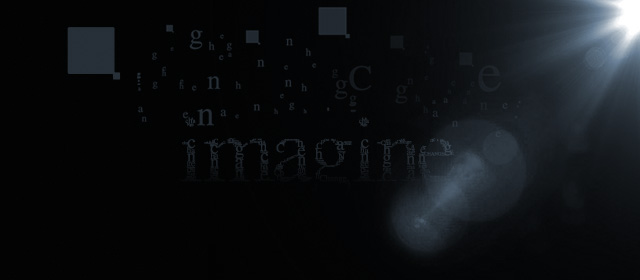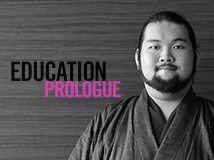EDUCATION
TALK 1/3
Technology that Captures Differences in Perception: KATSUIE SHIBATA
November 12, 2015
This is part one of a three-part conversation between folklore and cultural anthropology graduate student and up-and-coming sci-fi author Katsuie Shibata and Ricoh researcher Takuya Yamauchi. They are two people from the same generation igniting their thoughts and imaginations on the future of technology and education. The topics they discuss range from the quantization of human sensibility to the challenges that evolving technologies will bring to the human race.
Making the most of the quantization of human sensibility in technologies and learning
-
Yamauchi:
When I was a student, my research began with identifying and then applying the unique traits of human sight, which has the ability to adapt to various circumstances. I’m applying my research into human visual perception to R&D on technologies that make high-definition images possible with digital cameras. To push the development of image quality ever higher, I’m not only continuing to study the unique characteristics of human sight but also researching the differences between the vision (visual focal point) of professional and amateur photographers.
-
Shibata:
I find that research extremely interesting. Presently I’m majoring in folkloristics in my graduate studies, and often the techniques of veteran artists form a topic of discussion and interest. I wonder, what would be the difference between a professional and an amateur artist or craftsman?
-
Yamauchi:
Eye tracking experiments have revealed the difference between an amateur and professional when correcting color in a photograph. The amateur is more likely to focus on the face, whereas the professional focuses on the overall balance of the entire photograph. The focal points are different. Examining these specific differences in where professionals and amateurs focus is helping researchers make progress in preserving and quantizing artisanal techniques amid the recent awareness of the extent to which Japanese artisans are disappearing.
-
Shibata:
I’m surprised that you can use technology to quantize artisans. This is innovative and inspiring. In the study of folklore, we find that in traditional performance, for example, there are learned ways to move the body and hands. Skilled performers develop an intuition that utilizes senses beyond just sight. The skilled and the amateur performer thus experience the world differently. That technology makes possible a clear understanding of these differences is an intense, eye-opening realization.
-
Yamauchi:
When engaged in the study of cultural anthropology, observation becomes extremely important.
-
Shibata:
Yes indeed. Where you look and what you feel are vital.
-
Yamauchi:
The ability of engineers such as myself to quantize human sensations and sensibilities is facilitating research that I think will result in new perspectives and technologies.
-
Shibata:
Exactly. What is gaining the most attention in the study of folklore, in fact, is an approach that strives for a closer understanding of human sensibility. Research is progressing and not simply looking at the data to prove that, say—“in this location there was this kind of culture”—but, rather, asking questions like “why has that particular culture and its customs survived.”
-
Yamauchi:
Our respective fields of research have similarities.
-
Shibata:
Yes, in some ways they are extremely close. We often see examples where what one culture considers beautiful is repulsive to another culture. Cultural differences and their importance for human sensibility are gaining increasing attention from cultural anthropologists.
-
Yamauchi:
Pursuing and achieving a better understanding of human sensibility and cultural background would, it seems, help in devising technologies that will be more readily and fully adopted by the masses.

The significance of raising questions by looking at the other side of technology
-
Yamauchi:
Actually, I must admit that I’ve never made it through a science fiction novel. The first science fiction novel that I ever attempted was your debut work, Nilya Island. If I may give you my first and honest impression, it is a “difficult read” [laughs]!
-
Shibata:
Yes that’s exactly right: difficult to read [laughs]!
-
Yamauchi:
I felt that’s precisely what you were trying to achieve. The various characters’ thoughts are mixed in disarray. Reading this jumble of thoughts, I felt myself drawn into the story and its confusion. I felt bombarded by a bewildering array of information.
-
Shibata:
Thank heavens for that! You hit the nail on the head [laughs]! I attempted in my debut novel to depict technology and a world where one person is unable to understand other people or technology amid a high-volume influx of random information. In my second work, the short story Southern Cross (Cruz del Sur), I tried to demonstrate the changes in technology and the world, where everyone understands everything.
-
Yamauchi:
In Nilya Island, one technology is the catalyst of a war or dispute, not unlike in the present day. Atomic energy, I believe, is an example.
-
Shibata:
Yes, most science fiction authors tend to think of technology as good. But in my case, for the sake of advancing the narrative, technology inevitably causes something such as a war to erupt [laughs]. I’m not implying that technology is necessarily only has an evil side. I want to be on the side of raising questions stemming from technology and its evolution.
-
Yamauchi:
As an engineer, I often feel that it is imperative to be conscious of any problems and to maintain a sense of morality.
-
Shibata:
Overall, I believe that the world has benefited from technology. But this depends on your point of view. Someone else might see technology as ushering in some not very good things. It is the negative aspects of technology that I describe in Nilya Island. Yet I present a view of the world that is neither utopian nor dystopian but somewhere in between.



















